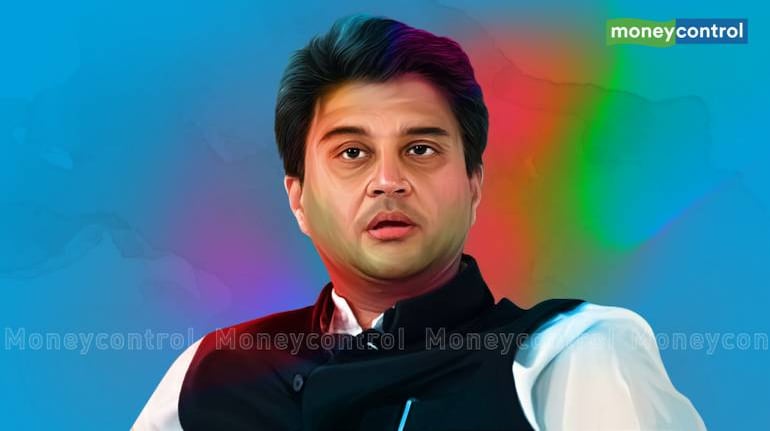



India's domestic air passenger traffic is set to double, reaching 300 million, by 2030, Civil Aviation Minister Jyotiraditya Scindia said on during the inaugural session of Wings India 2024 event in Hyderabad on January 18, a civil aviation conclave and exhibition. Air passenger traffic was 153 million in the calendar year 2023.
The Union Minister added that the domestic air traffic has surpassed the peaks recorded in the pre-COVID period. He said that the domestic air passenger traffic witnessed 15 percent growth CAGR while that of international 6.1 percent in the last decade.
The comments come amid heavy investments made by the Indian government on airport infrastructure coupled with soaring demand, underscoring an uptick in discretionary spending.
"Today India is the third largest domestic civil aviation market in the world, the seventh largest international civil aviation market in the world and if you combine both domestic and international, then the fifth largest civil aviation market in the world," Scindia said.
However, with the collapse of Go First, alongside IndiGo, Air India and SpiceJet grounding around 160 aircraft till December 2023, capacity constraints loom this year, threatening airlines' capability to cater to the booming demand.
Also read: 2024: Will the airline duopoly end? Aircraft deliveries, new aviation policy safety body in focus
Citing the rising demand, Scindia said, "We are preparing for the potential by creating capacities removing bottlenecks, simplifying procedures."
According to Scindia, India today is the third largest domestic civil aviation market in the world and the seventh largest international civil aviation market in the world. If both domestic and international are combined, then India is the fifth largest civil aviation market in the world.
In the last 15 years, domestic and international cargo witnessed a growth of 60 and 53 per cent respectively.
"Our domestic cargo traffic over the last 15 years has grown by close to 60 per cent and our international cargo traffic, by close to 53 per cent. And it is our considered opinion and that of industry consultants that domestic traffic which was 153 million in the last calendar year, up from 60 million in 2014, will grow to 300 million by 2030," he said.
On the fleet size in the country, Scindia said it has grown from 400 to over 700.
"Today, India has become the largest purchaser of aircraft in the world after the US and China. Our fleet size is going to grow from 713 to upwards of 2,000 in the next decade."
Observing that 74 airports were built in 65 years, he said the government has modernized and built an additional 75 airports, waterdromes and heliports in the last 10 years. "It is our target, that by 2030, we will take that number from 149 to upwards of 200 airports, waterports and heliports in our country," he said.
Scindia also marked the occasion by launching the Udan 5.3 scheme.
"This regional connectivity scheme has truly transformed the arena and our sector... today under Udan, infrastructure has been built at 76 airports, waterdromes and heliports.
Close to 517 new routes have been operationalised that could not have been dreamt of in the past," he said.
Indigo fiasco
Scindia also called out Indigo-MIAL incident as "unacceptable" after a viral video showed passengers have food next to plane on runway after flight delayed for 12 hours. "The incident was a shameful incident," he said, adding that the ministry reiterated the need to follow SOPs with airlines and airport to ensure such incidents don't happen again.
On January 17, the ministry had issued show-cause notices to IndiGo Airlines and the Mumbai airport, demanding answers after a viral video depicted stranded passengers nonchalantly eating on the tarmac after their Delhi-bound flight was delayed by. This delay was a result of severe flight disruptions at Delhi airport caused by dense fog.
New FDTL norms
The minister also said that the new Flight Duty Time Limitations (FDTL) will help enhance the safety of domestic air travel in India.
"Domestic demand for air travel has pushed for the need for new FDTL norms in India," Scindia said, adding that the growth in domestic demand for air travel has caused higher fatigue in pilots and crew in India.
He added that the new FDTL norms created by the government, were after careful consideration of international FDTL norms and adopting them to India.
Scidia also said that grounded aircraft was the biggest challenge that the aviation industry is facing at the moment.
He also said that not every airport in India needs CAT III-compliant runways while responding to a question that India only has six CAT-III-compliant runways at the moment.
"As the airport infrastructure in India improves runways will be upgraded as well," Scindia said.
Category III (CAT-III) refers to a set of international standards for precision instrument approach and landing in adverse weather conditions. It involves advanced autopilot and ground equipment that enables aircraft to land in very low visibility conditions, such as dense fog or heavy rain.
The minister also said that it was the right time for aircraft manufacturers to setup an aircraft final assembly unit in India.
Discover the latest Business News, Sensex, and Nifty updates. Obtain Personal Finance insights, tax queries, and expert opinions on Moneycontrol or download the Moneycontrol App to stay updated!
Find the best of Al News in one place, specially curated for you every weekend.
Stay on top of the latest tech trends and biggest startup news.